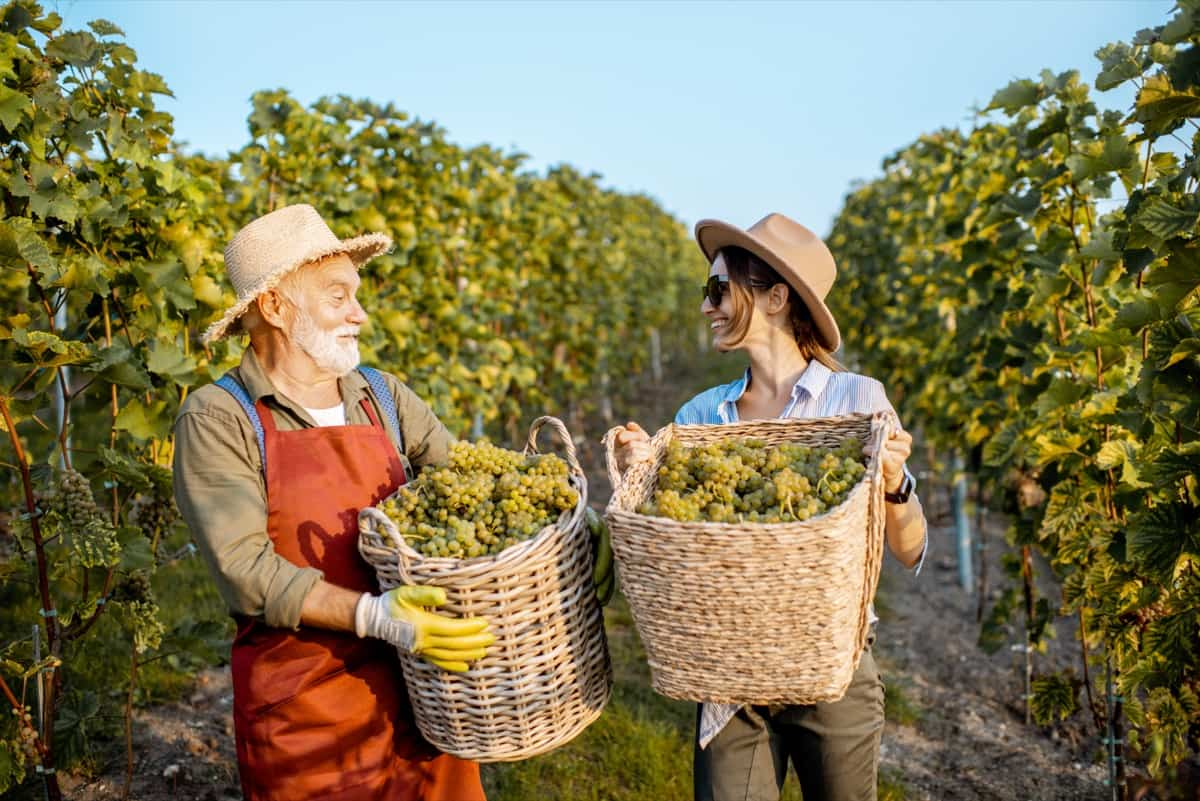Grape farming is an excellent agricultural business in the USA, with a high demand for fruits in local and international markets. Grapes are grown in most parts of the country and thrive in a wide range of soil types and weather conditions. If you are interested in starting a grape farm, this step-by-step guide will provide you with everything you need to know to get started.

How to Start Grapes Farming in the USA
Season to grow
The best season to grow grapes in the USA depends on the location and variety. Generally, grape farming is a seasonal business, and it is essential to plan your planting and harvesting according to the seasons. In most parts of the country, the best time to plant grapes is in the spring, usually between March and May, when the soil is warm, and the climate is ideal for the growth of young grape vines.
The ideal season for grape harvesting in the USA is in late summer or early fall, typically from August to October. The harvest time can vary depending on the grape variety and growing conditions, but it is important to harvest the grapes when they are fully ripe for the best flavor and quality. It is also important to handle the grapes carefully during harvesting to prevent damage to the fruit. Proper planning and management of the grape farming business can ensure a successful harvest season and a high-value crop.
Right Location
The first step in grape farming is to choose the right location. Grapes require well-drained soil, good sunlight, and a moderate climate to thrive. Look for a location with a gentle slope to ensure proper drainage and avoid low-lying areas prone to flooding. It is also important to consider water availability for irrigation, as grapes require regular watering to produce good yields.
Grape Varieties
It is important to choose a variety that is well-suited to your location and growing conditions. Some popular grape varieties for farming in the USA include Concord, Chardonnay, and Cabernet Sauvignon. Consult a local agriculture expert to determine the best grape variety for your location.
Prepare the Soil
Once you have chosen the location and grape variety, the next step is to prepare the soil. This involves removing weeds, rocks, or other debris from the planting area and tilling the soil to loosen it up. You may also need to add fertilizer and other soil amendments to ensure the soil is nutrient-rich.
In case you missed it: How to Start Potato Farming in the USA: A Step-by-Step Production Guide

Planting
The planting, spacing, and density of grape vines are critical factors that can impact the success of your grape farm. To plant grape vines, dig holes deep enough to accommodate the roots of the grape vines and space the vines according to the instructions provided by the grape variety. The spacing of grape vines can vary depending on the variety, but a common spacing is 6-10 feet between rows and 6-8 feet between plants within the rows.
This spacing allows proper air circulation and sunlight penetration to promote healthy growth and fruit production. The density of grape vines can also vary depending on the variety, but a common density is around 600-900 vines per acre. The density of grape vines can impact the yield and quality of the grapes, so it is important to consult with a local agriculture expert to determine the best density for your specific location and grape variety. After planting, water the grape vines thoroughly to ensure they are well-hydrated.
Install Trellises and Supports
Grape vines require support to grow properly, and trellises and other support structures are essential to ensure the vines stay upright and healthy. Install trellises and supports according to the instructions provided by the grape variety, and be sure to secure them firmly in the ground.
Pruning
Pruning is an essential part of grape farming, as it helps to promote healthy growth and higher yields. Prune the grape vines regularly to remove any dead or diseased wood, and to encourage the growth of new shoots and fruiting spurs.
Intercropping
Intercropping is a farming technique where two or more crops are grown on the same land to improve soil fertility, reduce pests and diseases, and increase yields. Intercropping with legumes such as beans and peas is an excellent way to improve the soil quality for grape farming. Legumes are nitrogen-fixing plants that add nitrogen to the soil, which is essential for developing grape vines.
Monitor and Control Pests and Diseases
Grapes are susceptible to various pests and diseases, including aphids, mites, and fungal infections. Regular monitoring and control measures are essential for preventing these pests and diseases from damaging your grape crop. Consult with a local agriculture expert to determine the best pest and disease control measures for your specific location.
Harvesting
Grapes are typically ready for harvest in late summer or early fall, depending on the grape variety and growing conditions. Harvest the grapes when they are fully ripe, and handle them carefully to prevent damage to the fruit. Depending on the grape variety, the grapes can be harvested by hand or machine. Once the grapes are harvested, they should be processed and stored according to the instructions provided by the grape variety.
Improve Yield
Yield is a critical factor in grape farming, and it is essential to calculate and improve your yield to maximize your profits. To calculate your yield, weigh the harvested grapes and divide them by the total area of your grape farm. To improve your yield, consider using organic fertilizers and other soil amendments to improve soil quality, and ensure that your grape vines are pruned and supported properly. The average grape yield is 20 to 40 tons per Hectare, according to the growing conditions in the USA.
In case you missed it: How to Start Lettuce Farming in the USA: A Step-by-Step Production Guide

Conclusion
Grape farming is a lucrative agricultural business in the USA, with a high demand for fruits in local and international markets. With proper planning and management, you can build a successful grape farming business and enjoy the benefits of a high-value crop. You can also plant grapes at home in pots or grow grapes on a terrace or on a fence.
- Feed Your Flock for Less: Top 10 Tips to Save on Chicken Feed
- Ultimate Guide to Ossabaw Island Hog: Breeding, Raising, Diet, and Care
- Hatching Answers: The Top 10 Reasons Your Chickens Aren’t Laying Eggs
- Eggs and Economics: Breaking Down the Cost of Raising Backyard Chickens
- Defend Your Greens: Proven Methods to Keep Iguanas Out of Your Garden
- Ultimate Guide to Cinnamon Queen Chicken: A Comprehensive Guide for Beginners
- Ultimate Guide to California Tan Chicken: Breeding, Raising, Diet, Egg-Production and Care
- Ultimate Guide to Marsh Daisy Chicken: Breeding, Raising, Diet, and Care
- 10 Types of Chicken Farming Businesses You Can Start for Profits